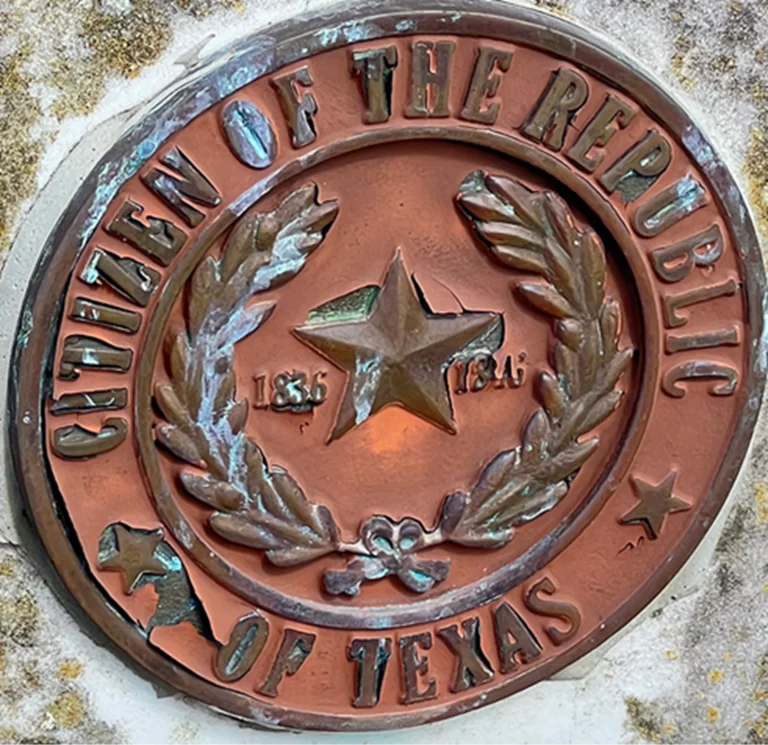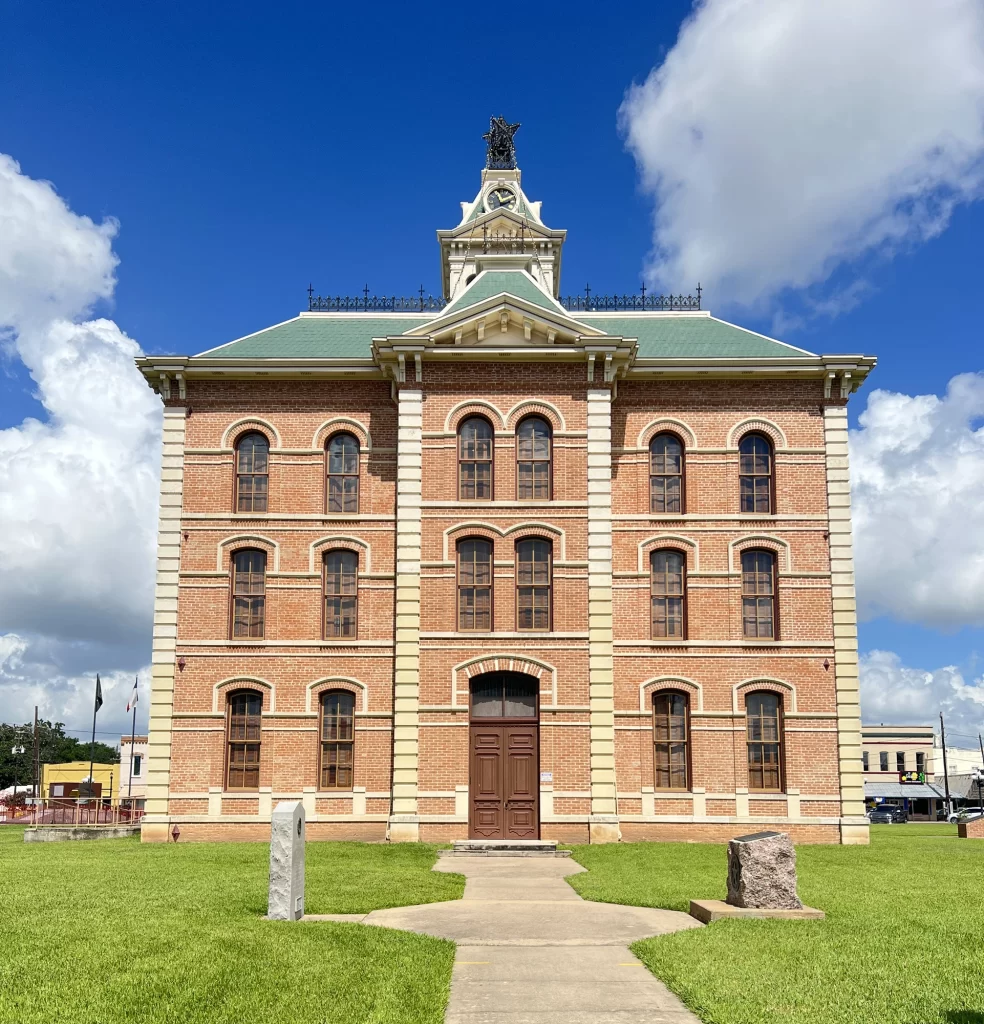The Tiny Town of Egypt
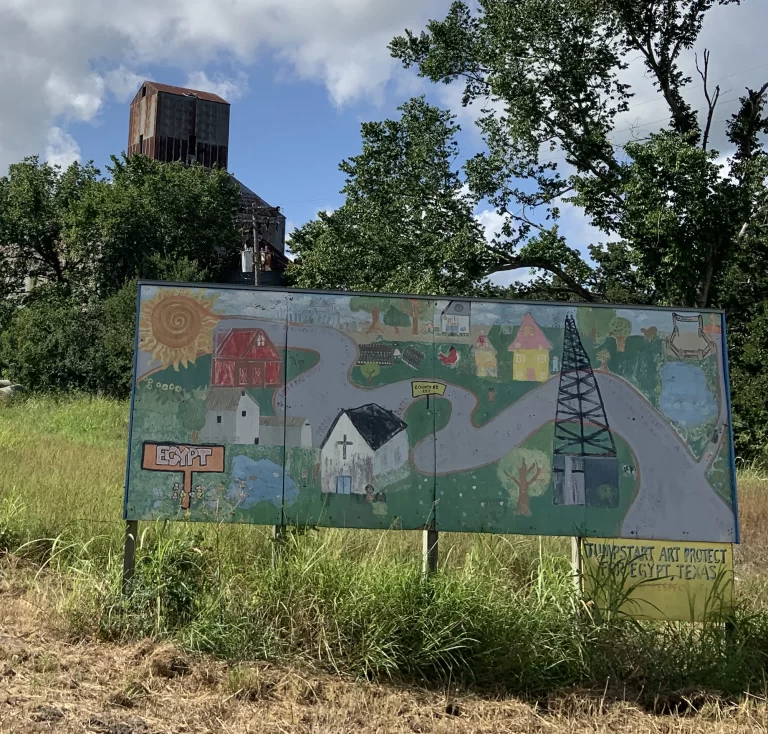
Beginning in the 1800s, about 15 miles northeast of the current Wharton, several businessmen bought a large area to farm. The original name was Mercer Crossing, but they changed the name to Egypt. I had never heard of it, but I was curious about the name.
Were there native Egyptians in that area? Before we left, I called a friend whose husband is Egyptian. Did he know anything about this little crossroad? No, he never heard of this town in Texas, nor of any Egyptians settling there. Checking more facts, I found they referred to their town as Egypt as it “felt like Egypt” with such hot and humid summers. My friend and I laughed heartily about my mistake with its name.
During the 1880s, they built some little stores and established the well-maintained old cemetery. Ambitious settlers, they not only built their own railroad (horses pulling the cars), and they built a large meeting building with a racetrack that attracted nearby settlers, no longer in sight.
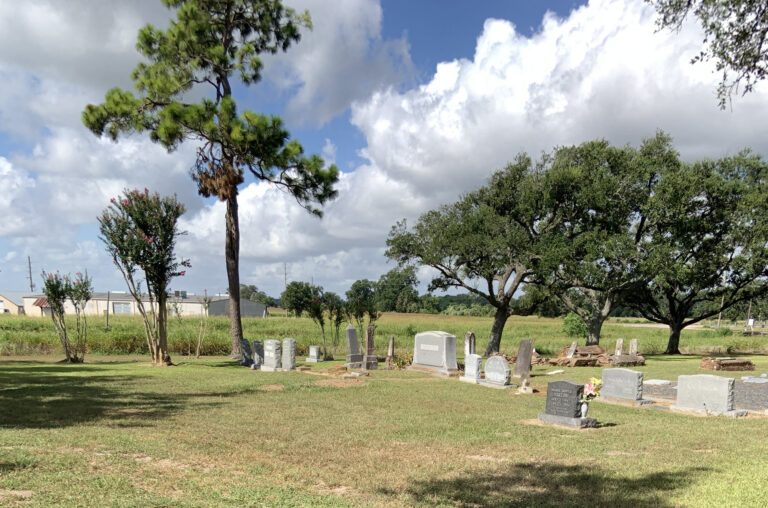
Egypt’s cemetery is a work of art from the 1800s. Take time to walk around the old crypts and funeral stones. Find peace and priceless beauty which the descendants share with the public.
These hardworking people had cotton to ship. They built a cotton gin, which still stands silently behind large bushes. You can see the old railroad crossing light with the notable collection near the old shops. The railroad lasted until 1991, before they demolished it.
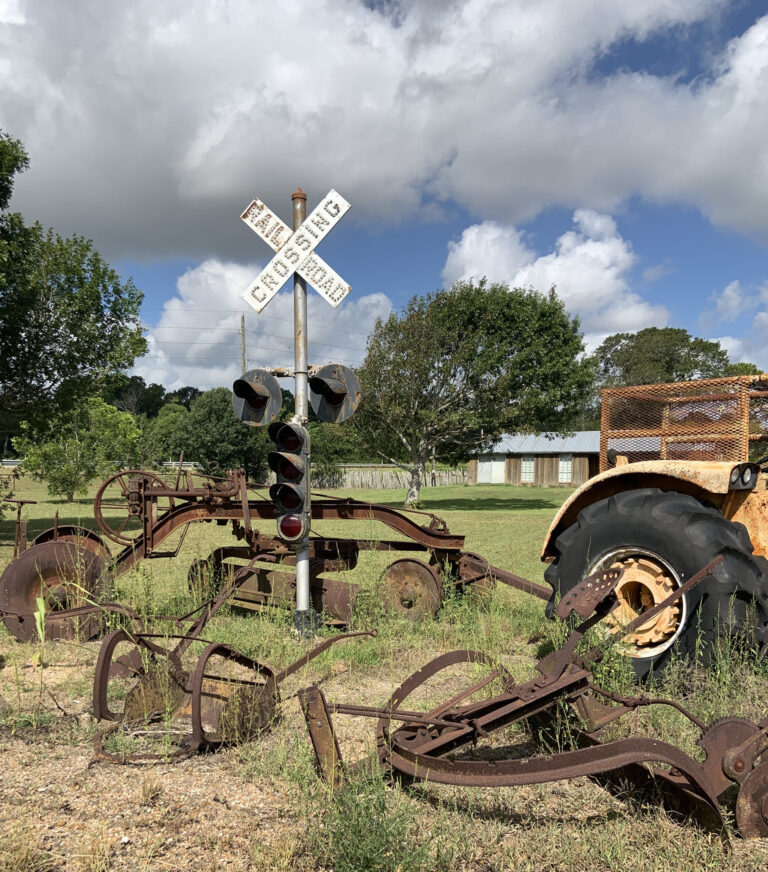
Today, two national railroads glide through Wharton and the old railroad is gone. Very few residents reside in the area now, but agriculture prevails. Small buildings rest near the cemetery to let you wonder how they survived.
Glen Flora
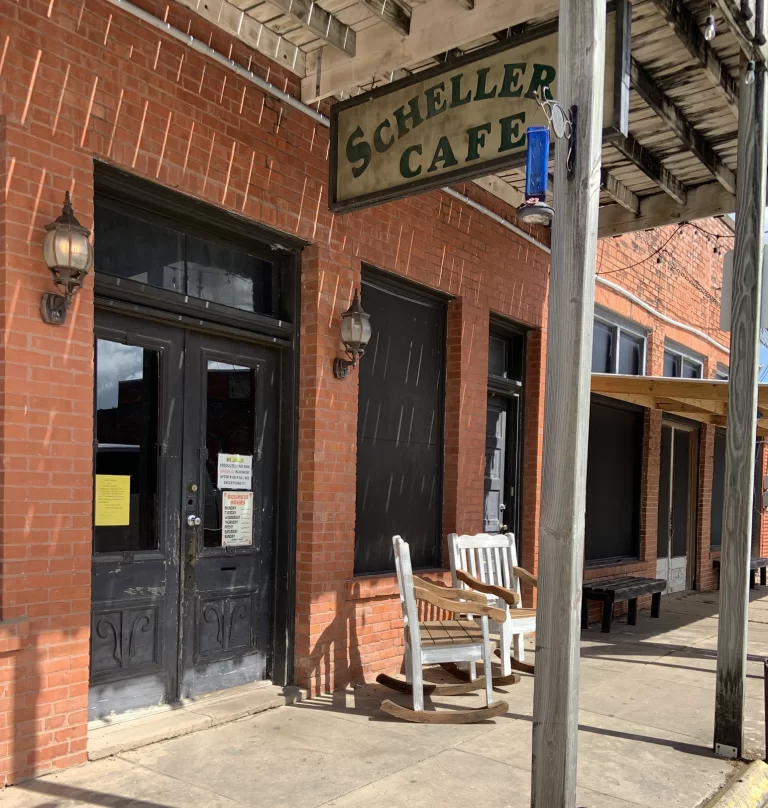
We discovered another small town in the area: Glen Flora. Unincorporated, yet they have a small post office. I saw only one restaurant/bar, which remains open for business. My bet is the farmers favor it on the weekends.
Wharton County Junior College
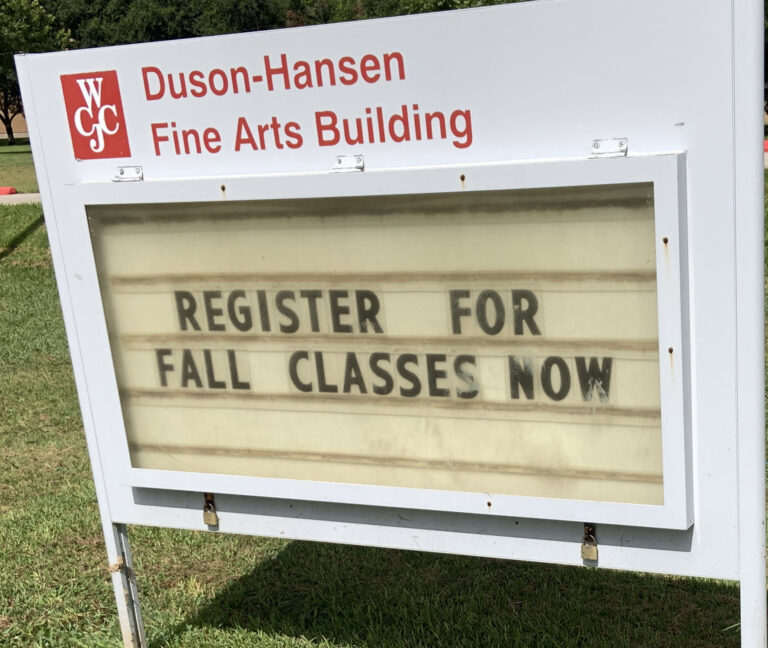
We returned to Wharton to visit Wharton County Junior College, a marvelous two-year college with opportunity for rapid transfer to other Texas schools for additional career opportunities.
There are four campuses for this college: Wharton, Sugar Land, Richmond, and Bay City. Each campus has specialties for their local needs. The Wharton campus has a cafeteria and dormitories. Located at 911 E. Boling Highway, the area offers fast food with nearby places to walk. Since this is written during the heat, we did not have a tour, as many students left for summer. A Nuclear Power Technology program is available as there is a nearby Nuclear Power plant nearby, “one of the newest and largest nuclear power facilities in the nation.”
The two-year programs are amazingly relevant to needs in the area: Computer Science, Health (Dental Hygiene), Beauty (Cosmetology), and Engineering Design, as examples.
We found a quick lunch and circled the stunning courthouse. Gift shops and several antique stores could have kept us busy for the day. We spent an entire hour roaming the Bohemian Rhapsody antique store on the square.
Two Museums at One Location
We headed to the two-in-one museum on the way out of town. The Wharton County Historical Museum and 20th Century Technology Museum, which are located at 3615 North Richmond Road in Wharton. Be sure to check to see their hours and special programs. With artifacts from long ago, the docents help you visualize the past with wonderful stories.
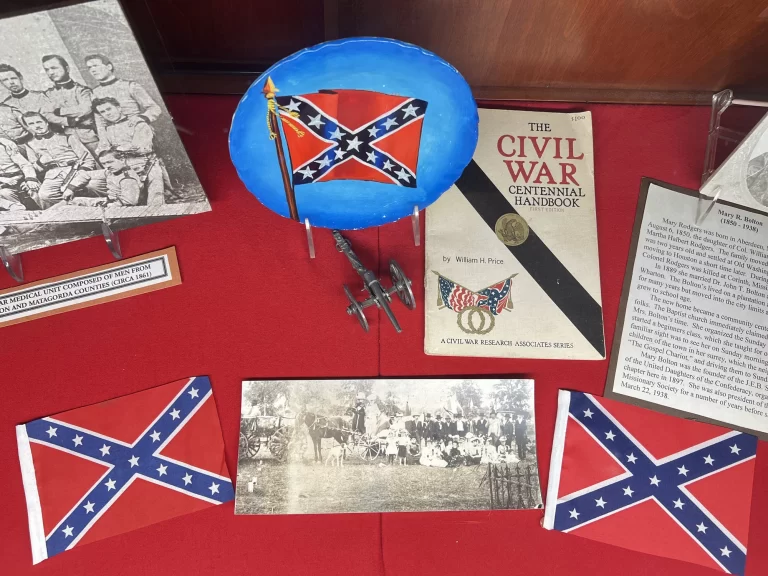
Tidbits from the Museums:
- Dan Rather is from Wharton. He wandered the town when not on a project. He is working at 93, but no longer in Wharton.
- Lloyd Shoppa grew up in Wharton and became a strong philanthropist. He rose through the ranks of Bell Helicopter. He and his wife were able to visit 64 countries. They reared four children, all of whom became stars with their own endeavors.
- Mr. Shoppa helped support his children’s interests, like material handling, Toyota, and Shoppa’s Farm Supply with John Deere dealerships. He and his wife had several different homes. His philanthropy is well-known in Wharton.
- Surprises exist throughout both museums. Find the elephant and its friends, which the docents will explain.
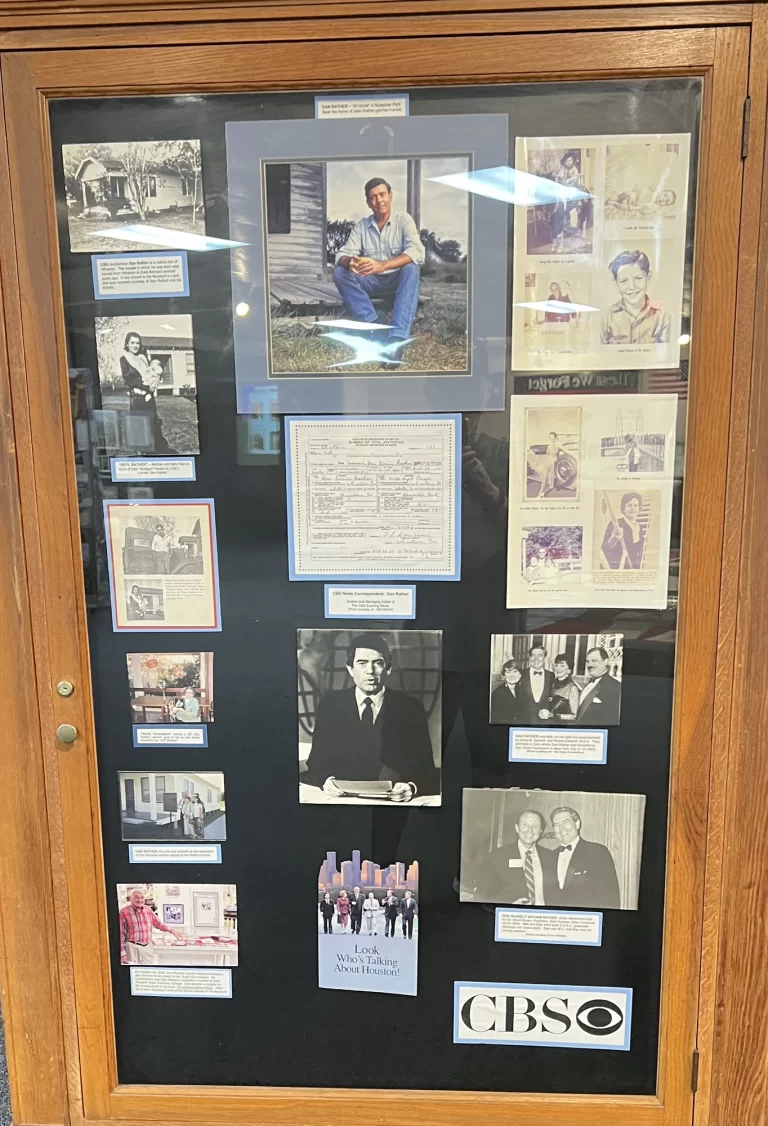
Walking through the twentieth century part of the museum brought smiles to both of us, as I saw what looked like my first Apple computer. I noticed a stove that looked like the one from my parents’ kitchen when I was a child. I could almost see my mom in her apron by the old stove. My husband spent time exploring the computers. I saw Nipper salt and pepper shakers that reminded me of my childhood. Enjoy items from your past.
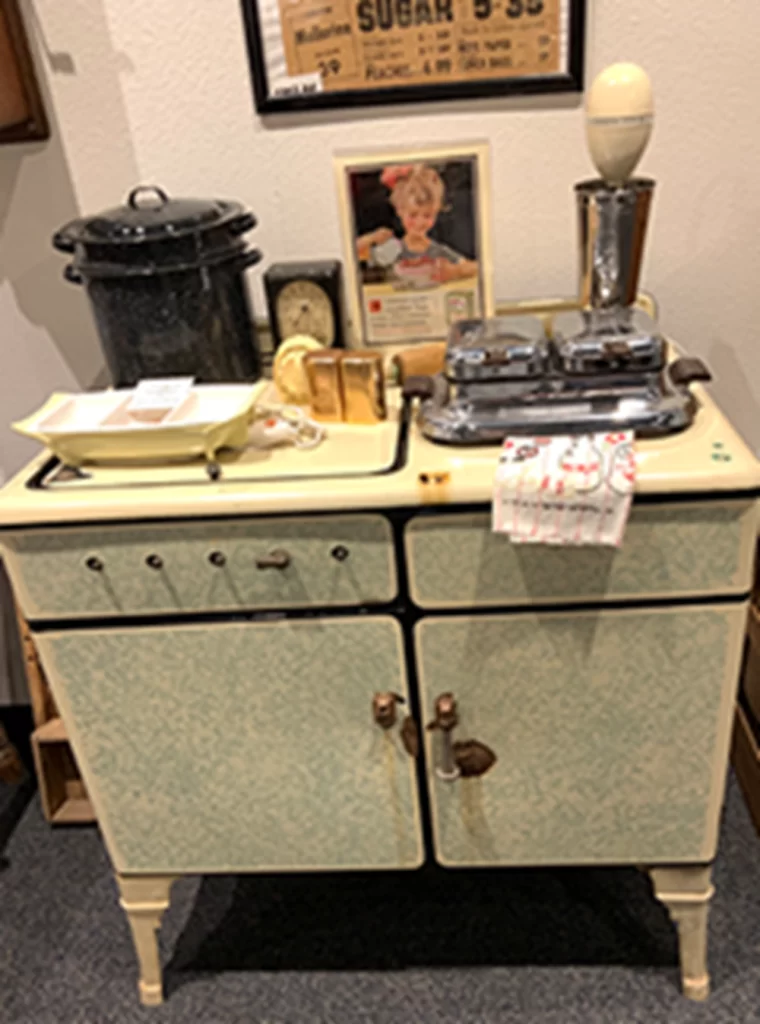
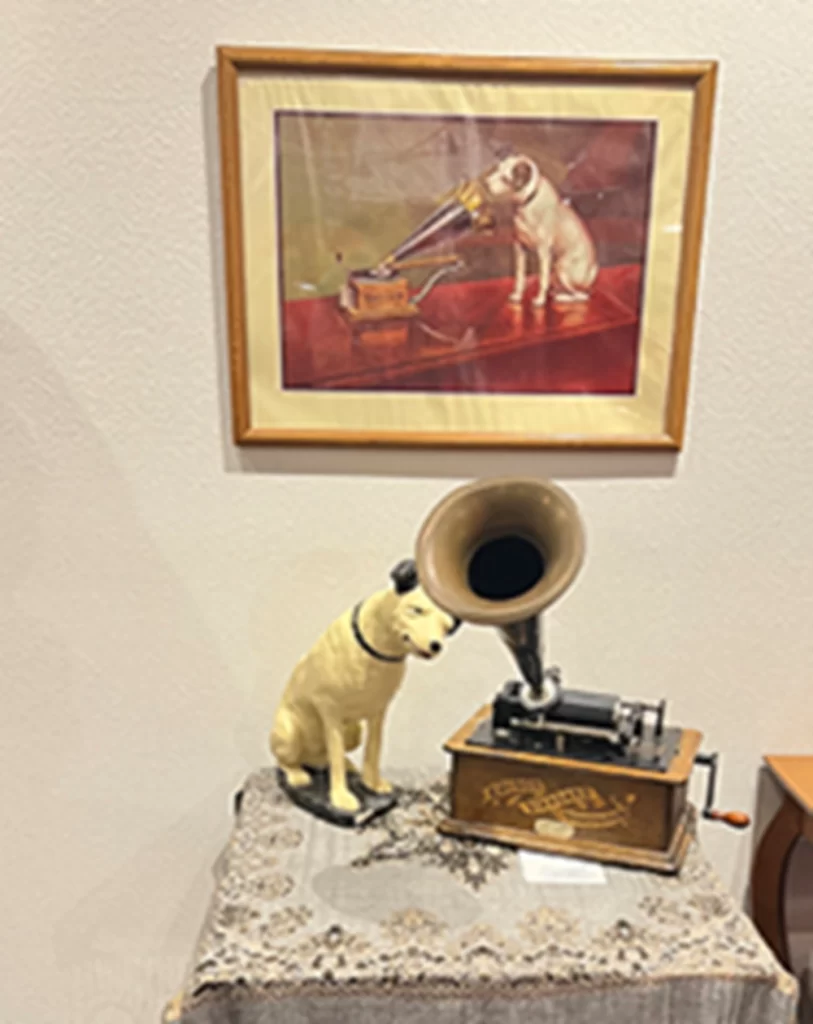
We felt as if we visited a world-famous museum. With the diversity of both museums together offering a wealth of Texas history, it’s free for you, but they encourage donations. If you plan to visit the museums, be sure to contact the museums for their hours may change.
You can’t go wrong with a trip to Wharton. Great opportunities for reminiscing and fascinating history.
